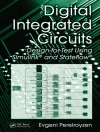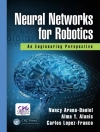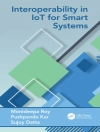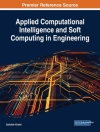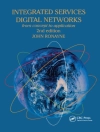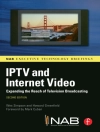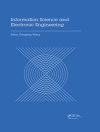Semiconductor Device Physics and Design teaches readers how to approach device design from the point of view of someone who wants to improve devices and can see the opportunity and challenges. It begins with coverage of basic physics concepts, including the physics behind polar heterostructures and strained heterostructures. The book then details the important devices ranging from p-n diodes to bipolar and field effect devices. By relating device design to device performance and then relating device needs to system use the student can see how device design works in the real world.
Cuprins
Acknowledgements. Preface. Introduction. 1 Structural Properties of Semiconductors. 1.1 INTRODUCTION. 1.2 CRYSTAL STRUCTURE. 1.3 LATTICE MISMATCHED STRUCTURES. 1.4 STRAINED EPITAXY:STRAIN TENSOR. 1.5 TECHNOLOGY CHALLENGES. 1.6 PROBLEMS. 1.7 FURTHER READING. 2 Electronic levels in semiconductors. 2.1 INTRODUCTION. 2.2 PARTICLES IN AN ATTRACTIVE POTENTIAL: BOUND STATES. 2.3 ELECTRONS IN CRYSTALLINE SOLIDS. 2.4 OCCUPATION OF STATES: DISTRIBUTION FUNCTION. 2.5 METALS AND INSULATORS. 2.6 BANDSTRUCTURE OF SOME IMPORTANT SEMICONDUCTORS. 2.7 MOBILE CARRIER. 2.8 DOPING OF SEMICONDUCTORS. 2.9 DOPING IN POLAR MATERIALS. 2.10 TAILORING ELECTRONIC PROPERTIES. 2.11 STRAINED HETEROSTRUCTURES. 2.12 DEFECT STATES IN SOLIDS. 2.13 TECHNOLOGY ISSUES. 2.14 PROBLEMS. 2.15 FURTHER READING. 3 Charge transport in materials. 3.1 INTRODUCTION. 3.2 CHARGE TRANSPORT:AN OVERVIEW. 3.3 TRANSPORT AND SCATTERING. 3.4 TRANSPORT UNDER AN ELECTRIC FIELD. 3.5 SOME IMPORTANT ISSUES IN TRANSPORT. 3.6 CARRIER TRANSPORT BY DIFFUSION. 3.7 CHARGE INJECTION AND QUASI-FERMI LEVELS. 3.8 CARRIER GENERATION AND RECOMBINATION. 3.9 CURRENT CONTINUITY(The law of conservation of electrons and holes separately). 3.10 PROBLEMS. 3.11 FURTHER READING. 4 Junctions in Semiconductors: P-N Diodes. 4.1 INTRODUCTION. 4.2 P-N JUNCTION IN EQUILIBRIUM. 4.3 P-N DIODE UNDER BIAS. 4.4 REAL DIODES: CONSEQUENCES OF DEFECTS AND CARRIER GENERATION. 4.5 REVERSE BIAS CHARACTERISITCS. 4.6 HIGH-VOLTAGE EFFECTS IN DIODES. 4.7 AVALANCHE BREAKDOWN IN A P-N JUNCTION. 4.8 DIODE APPLICATIONS:AN OVERVIEW. 4.9 LIGHT EMITTING DIODE (LED). 4.10 PROBLEMS. 4.11 DESIGN PROBLEMS. 4.12 FURTHER READING. 5 Semiconductor Junctions. 5.1 INTRODUCTION. 5.2 METAL INTERCONNECTS. 5.3 METAL SEMICONDUCTOR JUNCTION: SCHOTTKY BARRIER. 5.4 METAL SEMICONDUCTOR JUNCTIONS FOR OHMIC CONTACTS. 5.5 INSULATOR-SEMICONDUCTOR JUNCTIONS. 5.6 SEMICONDUCTOR HETEROJUNCTIONS. 5.7 PROBLEMS. 5.8 FURTHER READING. 6 Bipolar Junction Transistors. 6.1 INTRODUCTION. 6.2 BIPOLAR TRANSISTOR:A CONCEPTUAL PICTURE. 6.3 STATIC CHARACTERISTICS: CURRENT-VOLTAGE RELATION. 6.4 DEVICE DESIGN AND DEVICE PERFORMANCE PARAMETERS. 6.5 BJT DESIGN LIMITATIONS: NEED FOR BAND TAILORING AND HBTs. 6.6 SECONDARY EFFECTS IN REAL DEVICES. 6.7 PROBLEMS. 6.8 DESIGN PROBLEMS. 6.9 FURTHER READING. 7 Temporal Response Of Diodes and Bipolar Transistors. 7.1 INTRODUCTION. 7.2 MODULATION AND SWITCHING OF A P-N DIODE: AC RESPONSE. 7.3 TEMPORAL RESPONSE OF A SCHOTTKY DIODE. 7.4 BIPOLAR JUNCTION TRANSISTORS: A CHARGE-CONTROL ANALYSIS. 7.5 HIGH-FREQUENCY BEHAVIOR OF A BJT. 7.6 BIPOLAR TRANSISTORS: A TECHNOLOGY ROADMAP. 7.7 PROBLEMS. 7.8 DESIGN PROBLEMS. 8 Field Effect Transistors. 8.1 INTRODUCTION. 8.2 JFET AND MESFET: CHARGE CONTROL. 8.3 CURRENT-VOLTAGE CHARACTERISTICS. 8.4 HFETs: INTRODUCTION. 8.5 CHARGE CONTROL MODEL FOR THE MODFET. 8.6 POLAR MATERIALS AND STRUCTURES. 8.7 DESIGN ISSUES IN HFETS. 8.8 SMALL AND LARGE SIGNAL ISSUES AND FIGURES OF MERIT. 8.9 IMPLICATIONS ON DEVICE TECHNOLOGY AND CIRCUITS. 8.10 PROBLEMS. 8.11 DESIGN PROBLEMS. 8.12 FURTHER READING. 9 Field Effect Transistors: MOSFET. 9.1 INTRODUCTION. 9.2 MOSFET: DEVICES AND IMPACT. 9.3 METAL-OXIDE-SEMICONDUCTOR CAPACITOR. 9.4 CAPACITANCE-VOLTAGE CHARACTERISTICS OF THE MOS STRUCTURE. 9.5 MOSFET OPERATION. 9.6 IMPORTANT ISSUES AND FUTURE CHALLENGES IN REAL MOSFETS. 9.7 SUMMARY. 9.8 PROBLEMS. 9.9 DESIGN PROBLEMS. 9.10 FURTHER READING. 10 Coherent Transport and Mesoscopic Devices. 10.1 INTRODUCTION. 10.2 ZENER-BLOCH OSCILLATIONS. 10.3 RESONANT TUNNELING. 10.4 QUANTUM INTERFERENCE EFFECTS. 10.5 MESOSCOPIC STRUCTURES. 10.6 MAGNETIC SEMICONDUCTORS AND SPINTRONICS. 10.7 PROBLEMS. 10.8 FURTHER READING. A LIST OF SYMBOLS. B BOLTZMANN TRANSPORT THEORY. B.1 BOLTZMANN TRANSPORT EQUATION. B.2 AVERAGING PROCEDURES. C DENSITY OF STATES. D IMPORTANT PROPERTIES OF SEMICONDUCTORS.
Despre autor
Dr. Umesh K. Mishra is Professor at UC Santa Barbara in the Department of Electrical and Computer Engineering. His areas of focus include: Electronics and Photonics: high-speed transistors, semiconductor device physics, quantum electronics, optical control, design and fabrication of millimeter-wave devices, in situation processing and integration techniques. Professor Mishra joined the College’s ECE Department in 1990 from the Department of Electrical and Computer Engineering at North Carolina State University. A recognized leader in the area of high-speed field effect transistors, Dr. Mishra has made major contributions at every laboratory and academic institution for which he has worked, including: Hughes Research Laboratories in Malibu, California; the University of Michigan at Ann Arbor; and General Electric, Syracuse, New York. His current research areas attempt to develop an understanding of novel materials and extend them into applications. He is the Director of the AFOSR PRET Center for Non-Stoichiometric Semiconductors and of the ONR MURI Center (IMPACT), which relates to the application of Si C and Ga N based transistors for power amplification. In 1989 Dr. Mishra received the Presidential Young Investigator Award from the National Science Foundation. In 1992 he received the Young Scientist of the Year Award from the International Symposium on Ga As and Related Compounds. He was elected as a Fellow of IEEE in 1995.
Jasprit Singh joined the University of Michigan, Ann Arbor, in 1985 and he is Professor in the Electrical Engineering and Computer Science department.


